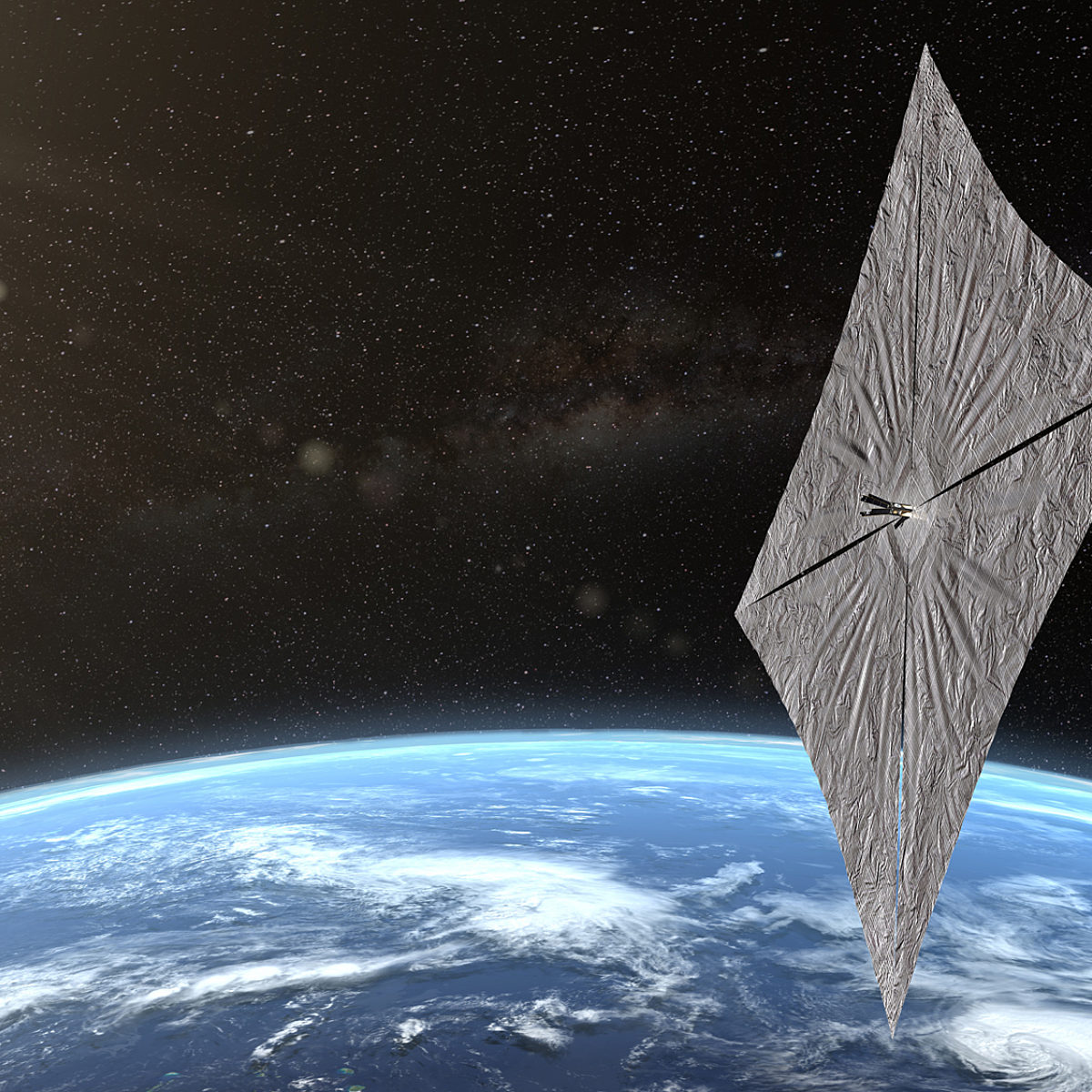Jason Davis • Aug 14, 2019
How to See LightSail 2 in the Night Sky
The Planetary Society's LightSail 2 spacecraft is continuing to sail on sunlight around the Earth. Since deploying its solar sail on 23 June, the spacecraft has raised the apogee, or high point, of its orbit by more than 4.5 kilometers.
While radio operators around the world have heard the spacecraft's signal, and even provided data via the SatNOGS network, we haven't seen reports of any visual sightings from the public. This is likely because LightSail 2's orbit is higher and closer to the equator than LightSail 1, which makes it visible to fewer people. If your latitude is between 42 and -42 degrees—you can check this by right-clicking your location in Google Maps and selecting "What's Here?"—there’s a chance you may be able to see the spacecraft if several conditions that we’ll describe below are right. And if you do see the spacecraft, we'd like to hear from you—directions on how to do that are listed below!

LightSail, a Planetary Society solar sail spacecraft
LightSail is a citizen-funded project from The Planetary Society to send a small spacecraft, propelled solely by sunlight, to Earth orbit.
Figure Out When to Go Outside
Start your journey by visiting our mission control page at planetary.org/missioncontrol. Below the map that shows LightSail 2's current position, you'll see the next time the spacecraft will be within range, based on your browser's reported location (look for the red dot on the map to see where the page thinks you are).
Just because LightSail 2 is flying within range doesn't mean you'll be able to see it. Generally speaking, you’ll need for the Sun to be below the horizon for you but still high enough to shine on the spacecraft. If you'd like to take the guesswork out of whether that will be the case for a particular pass, or see pass times for different locations, this link will take you directly to a 10-day pass prediction page provided by N2YO.com, the website that provides pass data for our mission control page.
The 10-day prediction page will by default show you all of the times LightSail 2 should theoretically be visible from your location. There's also a color code that will tell you the quality of each pass, ranging from marginal to excellent. Marginal means there's only a slim chance you'll be able to see it. If you're getting up in the middle of the night to look for the spacecraft, I recommend you wait for a better pass if one is available.
To change your location, click "change" next to the observing coordinates in the top box. You'll be prompted to set up an account.
There are also other satellite tracking sites that will give you pass predictions. Heavens Above is one of my personal favorites, and they have LightSail 2 in their featured object list. Just make sure to specify your location in the top-right box, and create an account so the site knows where you are.
Go Outside
When you're ready to spot the spacecraft, make sure you go outside a few minutes before the pass starts to let your eyes adjust to the darkness. Either N2YO.com or Heavens Above will show you times, azimuths, and elevations for the start of the pass, max altitude, and the end of the pass. Azimuth tells you which direction to look and elevation tells you how high up in the sky the spacecraft will appear in degrees (0 is the horizon, 90 is directly overhead).
Try not to be too disappointed if you don't see the spacecraft on your first or even second try. Double-check your times and directions, and make sure your browser is correctly seeing where you are. There are a lot of variables involved, including the angle of the sail with respect to the Sun. If the sail is edge-on to you, it likely won’t be visible. But if it’s oriented so some sunlight gets reflected in your direction, you might see it. Out of our Planetary Society staff members, only COO Jennifer Vaughn has seen LightSail 2, and she reported it was very dim from the Los Angeles area.
Tell Us About It
If you do see LightSail 2, we'd love for you to let us know! You can report a sighting by emailing us at [email protected]. Make sure you include the following information:
- Your name
- Your observing location
- Your observing date and time
- Any other additional info you want to share, including pictures
While we won't be able to respond to every email, we'll be recording all of your responses, and may share your report on social media or our blog. Good luck!
Support our core enterprises
Your support powers our mission to explore worlds, find life, and defend Earth. You make all the difference when you make a gift. Give today!
Donate

 Explore Worlds
Explore Worlds Find Life
Find Life Defend Earth
Defend Earth


